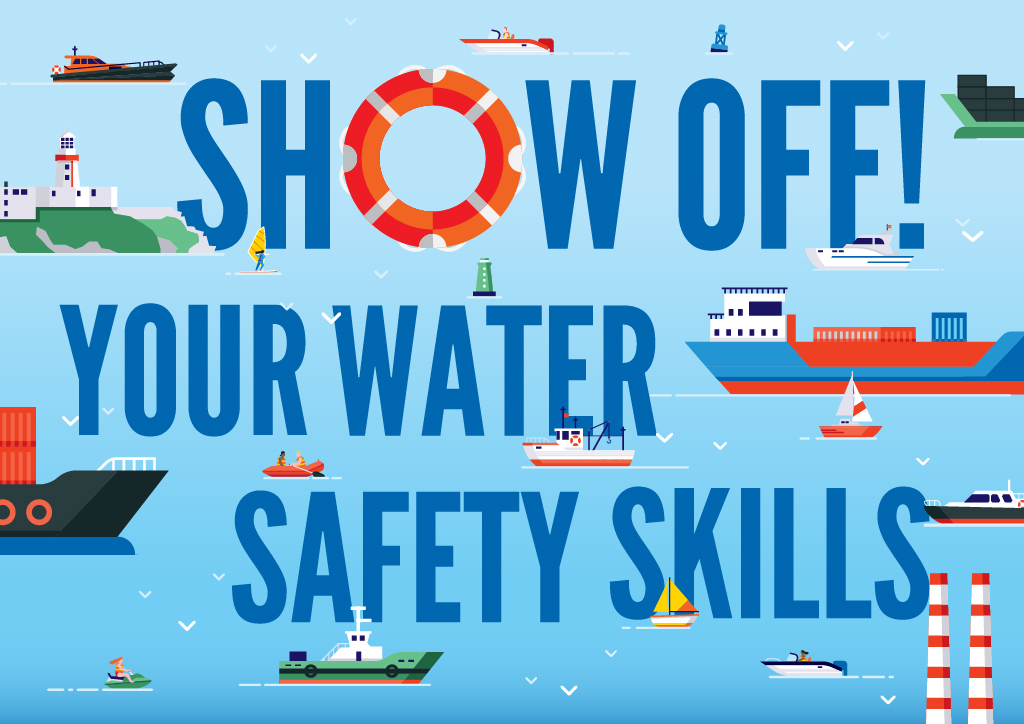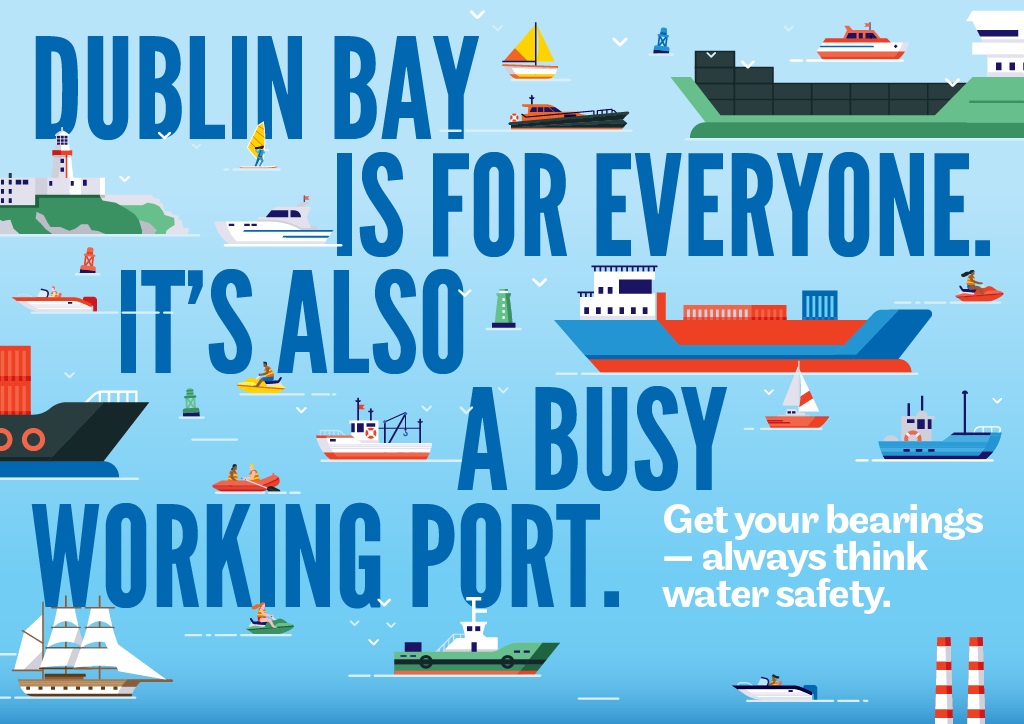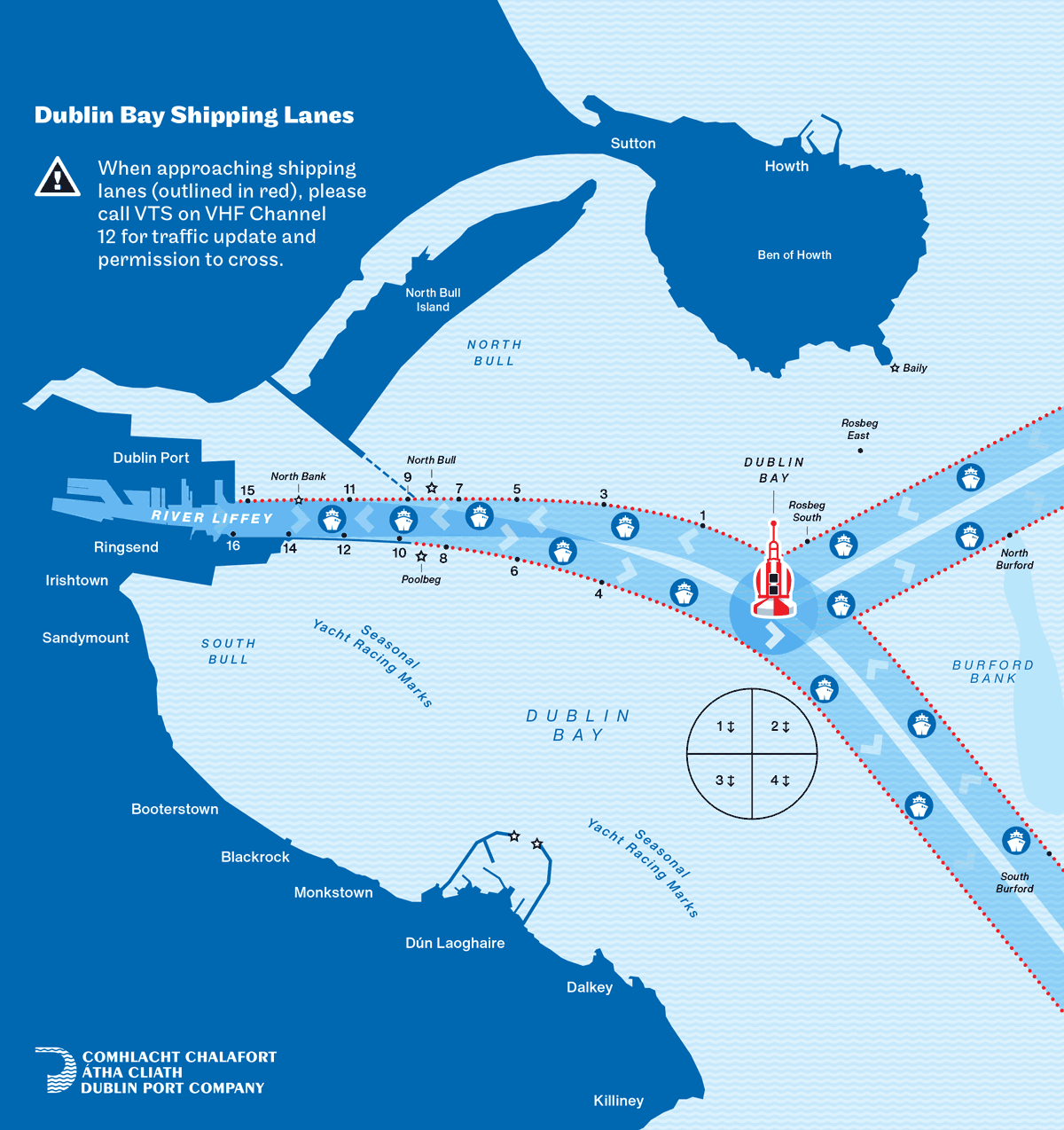
The waters of Dublin Bay, Dublin Port, and the River Liffey are there for everyone to enjoy safely. It’s also a busy working port.
Did you know? There are more than 17,000 ship movements in and out of Dublin Port every year. This equates to almost 50 each day. It’s easy to see why it is so important to get your bearings and always think water safety.
There is a huge variety in the size and type of ships sharing the water with our city’s boat and yacht communities, sailing groups and sports clubs. While many will be very familiar with navigating the approach to Dublin Port, and crossing the shipping lanes in Dublin Bay, we know that those who are less experienced may not know the simple precautions that can help to keep everyone safe.
To encourage the responsible use of Dublin Bay for leisure and recreation, Dublin Port Company has created a starter’s guide to basic safety etiquette on the water, including a map showing a simplified view of the shipping lanes at Dublin Port where permission to cross is mandatory for all leisure craft users. This information applies to all, whether as a boat user, paddle boarder, wind surfer or jet-skier.
What Safety Precautions Can You Take?
Get Your Bearings
Familiarise yourself with the layout of Dublin Bay, Dublin Port and the River Liffey.
Did you know? Traffic moving in and out of Dublin Port, such as passenger ferries and container ships, use a highway system that includes one-way lanes and even a roundabout!
The VTS station at Dublin Port monitors and controls the traffic by giving permission for ships to enter and exit when it is safe to do so. Permission is also needed for leisure craft moving across this busy intersection, for example, someone sailing from Howth to Dun Laoghaire or vice versa.
To help you get your bearings, the following map shows the shipping lanes and how to approach for permission to cross.
Always Think Water Safety
Take the time to remind yourself and others of the following safety precautions. They could save your life.
Dublin Port crews are often called to assist people who have lost their bearings on the water and sailed too close to much larger ships or inadvertently strayed into the shipping lanes without permission to cross first.
It can be a frightening experience and it is also dangerous for those involved. There are some simple steps that everyone can take to help plan and make every outing on the water much safer.
- Plan your voyage: check the wind, weather and tide.
- Tell someone where you are going and your time of arrival/return.
- Wear a personal flotation device.
- Ensure your safety equipment is working, including VHF radio for boat users.
- Familiarise yourself with the location of the shipping lanes in Dublin Port.
- Keep a sharp lookout for other boats by sight and by sound, and radar if you have one.
- Call VTS on VHF Channel 12 to get traffic updates and permission to cross the shipping channel or traffic routing schemes at Dublin Port.
- In an emergency, call the Coast Guard on VHF Ch 16 or phone 112.
Note on Jet Skis and Personal Watercraft (PWC)
- Jet ski and PWC users are reminded to adhere to the 6 knots speed limit when within 60 m of a pier, jetty, slipway, mooring, shore or another vessel and 120 m of a swimmer or dive flag.
- Freestyling is not permitted within 200m of swimmers, or the shoreline.
Detailed guidelines and technical information for leisure craft users entering Dublin Port are contained in A Guide to Port Entry, and further information is also available from the Government’s Code of Practice for the Safe Operation of Recreational Craft.
Don’t be a show off, show off what you know!
Always think water safety @DublinPortCo pic.twitter.com/MS6aVR2Odi
— Darren Conway (@darren_conway) May 23, 2022






